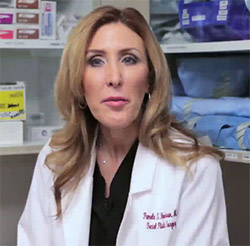What is melasma, and is there any way to treat it?
Melasma treatment Scottsdale
There are a few different potential causes of hyperpigmentation or darkening of the skin. One relatively common cause is melasma. This condition is often caused by hormonal changes and usually occurs in women.
Melasma doesn’t affect your overall health, but because it usually impacts the facial skin, it can significantly affect a person’s self-esteem and confidence. Many people are looking for a way to get rid of melasma. While it can go away on its own, we also have effective treatment options available that can help.
What does melasma look like?
People with melasma have discolored patches of skin. These are commonly brown and may range from just slightly darker than the surrounding skin to significantly darker. The patches can also appear bluish-gray.
Melasma most commonly occurs on the face, but the hands and arms can also be affected. The patches are flat, and they may be larger blotches, or they may be smaller, like freckles. In general, they occur on both sides equally. The cheeks, forehead, bridge of the nose, upper lip, and chin are the most commonly affected areas.
What causes melasma?
In most cases, melasma occurs in women and is caused by hormonal changes. The dark pigment in the skin, known as melanin, is produced by cells in the epidermis, which is the outer layer of the skin. Increases in the levels of certain hormones, including estrogen and progesterone, can trigger the melanocytes to produce more melanin.
The most common time to develop melasma is during pregnancy. When a woman is pregnant, her levels of estrogen and progesterone are very high. Studies have found that between 15% and 50% of pregnant women are affected by melasma. Hormonal medications, like birth control pills and menopausal hormone therapy, can also cause some women to develop melasma. Certain other medications, like anti-seizure medications, can sometimes also trigger melasma.
While melasma is commonly triggered by hormonal changes, sun exposure can make it worse. This is because sun exposure also causes melanocytes to produce more melanin, and the combination of hormonal changes and sun exposure can result in significant darkening of the skin. This helps to explain why melasma is most commonly seen in areas that are frequently exposed to the sun, like the face.
How can melasma be treated?
In some cases, melasma will go away on its own. When a woman develops melasma during pregnancy, then it will generally fade after the pregnancy is over. For those whose melasma is caused by medications, stopping or switching the medication often helps. For example, if a woman switches from birth control pills to a non-hormonal form of birth control, her melasma will usually fade over the next few months.
However, melasma can persist for longer. In some cases, once it develops, it lasts for the rest of a person’s life. This can be very bothersome to some people. Fortunately, we do have a few treatment options that may help. Options include:
- Avoiding sun exposure. Because sun exposure can make melasma worse, it’s important to be extremely diligent about reducing sun exposure, as well as covering up from the sun (such as wearing a wide-brimmed hat) and using sunscreen with an SPF of at least 30 whenever you go outside.
- Topical medications. Medications like hydroquinone and tretinoin can help to lighten and even out skin tone. Topical corticosteroids (anti-inflammatory medications) can also help to reduce hyperpigmentation by reducing inflammation in the skin. There are also other medication options that can be tried. In general, topical medications are the first treatment that’s tried for melasma. If these are not effective, other treatment options can be considered.
- Laser skin resurfacing. A fractionated laser uses small areas of intense light energy to stimulate the skin’s natural healing response. This can help to even out the skin tone. Although lasers can be helpful for melasma, it’s important to use them with caution, because there’s the potential for lasers to cause inflammation of the skin that actually leads to further skin darkening. Using skin-lightening medications along with laser treatment helps to reduce this risk.
- Chemical peels. During a chemical peel, a solution is applied to the skin that causes the outer skin’s surface to slough off. When the skin regenerates, it’s generally smoother and more evenly colored. Similar to lasers, it’s important to use caution with chemical peels to avoid skin inflammation and subsequent skin darkening.
Melasma treatment Scottsdale
If you have patches of darker skin on your face, you might be experiencing melasma, particularly if you’re a woman who’s pregnant or has started taking hormones. Consulting with an expert in facial cosmetic medicine will allow you to be sure about the diagnosis, and to get effective treatment for your condition if you’re bothered by it.
 In the sunny Scottsdale area, Dr. Henderson frequently sees melasma and is experienced in treating it. Her patients also appreciate how compassionate and understanding she is. Simply contact our front desk to schedule your appointment.
In the sunny Scottsdale area, Dr. Henderson frequently sees melasma and is experienced in treating it. Her patients also appreciate how compassionate and understanding she is. Simply contact our front desk to schedule your appointment.

